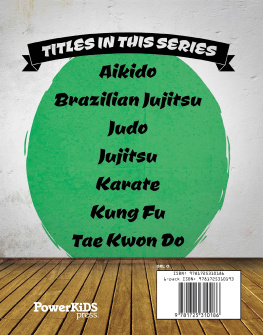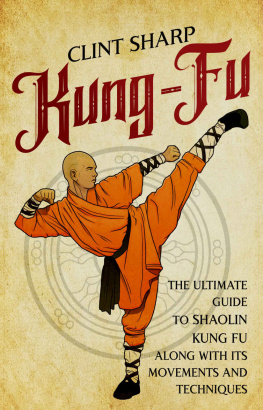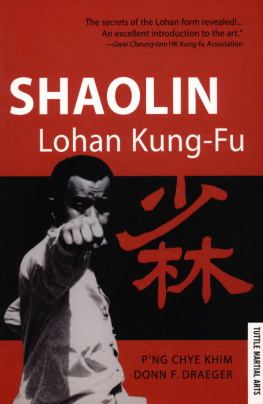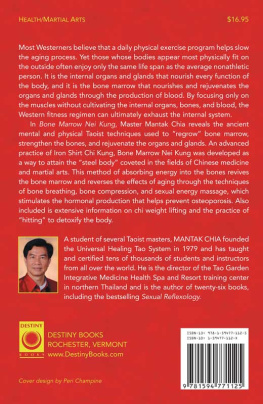
The Meritocratic Standards of Mozi
Why Nei Kung Cannot Be Limited Only to Chinese Students
& Discussion On the Role of Karma in the First Four Levels of Mo Pai Nei Kung
Presented by Lung Hu Shan Publications
Author: Shifu Lin
Editors: Arman Alfares, Shifu Hern Heng
1996-2012. All Rights Reserved.

Part 1
Learning Nei Kung and Meritocratic Standards
Our power is a natural power. It is the force of nature within ourselves. Trust in nature to teach you the principles of the Universe. John Changs teacher, Liao Sifu
Since the documentary Ring of Fire and the books Magus of Java and Nei Kung , many have clamored to learn Mo Pai Nei Kung from a man who calls himself John Chang, to Westerners. In fact, John Chang is not the name of the man they seek, but it is a name he uses because he does not want to be bothered by hundreds or thousands of people, who in most cases will not even show the discipline with which to start learning Nei Kung from the Mohist lineage he learned from.
Mo Pai Nei Kung is a Taoist form of Meditation. That is to say that the methods are common to Taoist orders. The particular line through which John has learned is from a Taoist lineage tracing itself through Lung Hu Shan Taoists. At some unknown point, this line developed a moral affinity for the teachings of Mo Tzu (470 BCE 391 BCE) who is also transliterated as Mozi.
Mozi was a teacher who was seen in competition with Kungfuzi (Confucius) but who is said to have lived shortly after Kungfuzi. Mozis approach to morality became emphasized in Mo Pai Nei Kung, in part because the Qi itself responds to morality, as noted in Overcoming Sickness with Nei Kung: Why do so many Mo Pai practitioners get seriously ill? What you can do to prevent, or correct this, in reference to hao ran zhi qi (Cultivating Flood-Like Qi). More will be discussed on this matter later in this work. In relation to this, the teachings of Mozi will be discussed, relative to issues of merit and the will of Heaven ( Tien Ming ). Following this, the Levels of Mo Pai, will be described for those who either do not know about them or for those who have heard some things but do not necessarily have a completely coherent picture.
All of this is not to say that an immoral person cannot acquire vast amounts of Qi, but at a certain point, Qi will respond to you more readily if your karma is correct. This text will explain how karma or virtue is interrelated to the power that Heaven allows you to accumulate in a Mohist approach to Nei Kung.

Above is a stamp honoring Mozi
It is worth noting that Mo Pai is not the only system to speak in these terms, or to deal with the first four levels corresponding to Mo Pai methods. Tibetan Tummo Yoga is very similar, particularly at the first level and at what we will simply refere to here as the fourth level of Yin-Yang Kung. Tibetan Tummo Yoga is a closed system in many cases, like Mo Pai, and thus it is difficult to say just how similar they may be at certain levels, but while there are many distinct differences, there are also key levels that overlap.
Japanese Tendai ritual meditations also follow a similar method as the first level of Mo Pai Nei Kung. The Tibetan monks who practice Tummo often live for years in the mountains of the High Plateau, more than 15,000 feet, have chanted and meditated for at least 10 years, have a gifted master to teach them, without which they would never even dream of attempting such a difficult practice. But there are some who have learned from them and achieved Tummo heat (and beyond) in urban settings. In all cases, however, their motive is not to generate heat, or merge energies, for the sake of itself. While this is beyond the scope of the discussion at hand, it is stated to illustrate just how off course most are when they approach meditation today. This is said to preface the fact that Mohist Nei Kung must similar focus not simply on accumulating power for the sake of itself, but should be concerned with why it would be in accordance with the will of Heaven for power to accumulate within your body. Similarly, it is to point out that one should not undertake Mo Pai Nei Kung without instruction from a teacher. It is for this reason, at the bequest of some of my students, that I have offered to teach those who are willing to demonstrate sincerity through honorarium; traditional in Chinese Martial Arts and Meditation.
Why is Mo Pai Called Mo Pai?
The name Mo Pai means The Cult of Mozi and refers to a master who lived in China (ca. 470 BCE ca. 391 BCE), during the Hundred Schools of Thought period (early Warring States Period). Born in Lu Shan, in Henan Province, he founded the school of Mohism and argued strongly against Confucianism; noting that the ways of the ancients adhered to as tradition by Kungfuzi, was actually innovative in their respective times. To understand ethics, morality and virtue ( de ), the reader should study the teachings of Mozi. It will become apparent from his teaching why he is regarded as the head of the Mo Pai lineage, even though the legends of the Pai do not consider him to have achieved a very high level of mastery in Nei Kung.
T he Mo Pai lineage does not trace down some hidden parallel path with Taoism, as many falsely believe. Instead, it intersects with Taoist lineage at a few known levels, and almost certainly many that are not known anymore. For example Johns grandmaster was a resident of the Lung Hu Shan Taoist Temple. They, like Mo Pai, attribute the highest level of mastery to the enigmatic figure Zhang, San-Feng. So here we have intersection with two very distinct lineages of Taoism. As such, it will not surprise the student of Taoism to find that the methodology in these levels is very similar to what you learn in Taoist practice.
There is not a lot that needs to be said about beginning meditation. In fact, for many months it would be good for you to simply start sitting every single day, until you have built up to an hour, breathing very deeply and slowly. If you can do this with the utmost consistency then you will be well on your way to mastery yes, consistency is the key to mastery.
If you want to know about how to practice Mo Pai Nei Kung, it is not very hard if you have someone to guide you, and that is the key. If you were told here exactly how to perform Mo Pai Nei Kung, you would not succeed, because you do not have a teacher. I have offered to teach a limited number of Western and Eastern and Middle Eastern students Mo Pai Nei Kung, before retiring. I hope to inform those who are sincere enough to attain Yin-Yang Kung of how to accomplish this, regardless of what they look like, or who their ancestors were, or where they come from, but based instead on their merit and effort alone.
T he key to progression is consistency and learning from someone who can help you avoid pitfalls is essential. Some people read my first book which offered them the ability to get in touch and begin training, and they were disappointed that I did not just tell them there how to do it. What does this mean, how to do it? Was I supposed to write about every pitfall you could possibly encounter? Was I supposed to tell you what the first month would be like, what the sixth month would be like, what the first year would be like, what to do if you train in weight lifting, if you do Wai Jia or Nei Jia martial arts? How could I possibly tell you every scenario in one book? Instead, this is why you need a teacher, and I offered to teach some of you, in part because I found out from a student that non-Chinese were no longer being taught Mo Pai. The other reason, as I hinted at in my fourth book, was to help fund a cause that is near to my heart and my political and social concerns.
Next page








